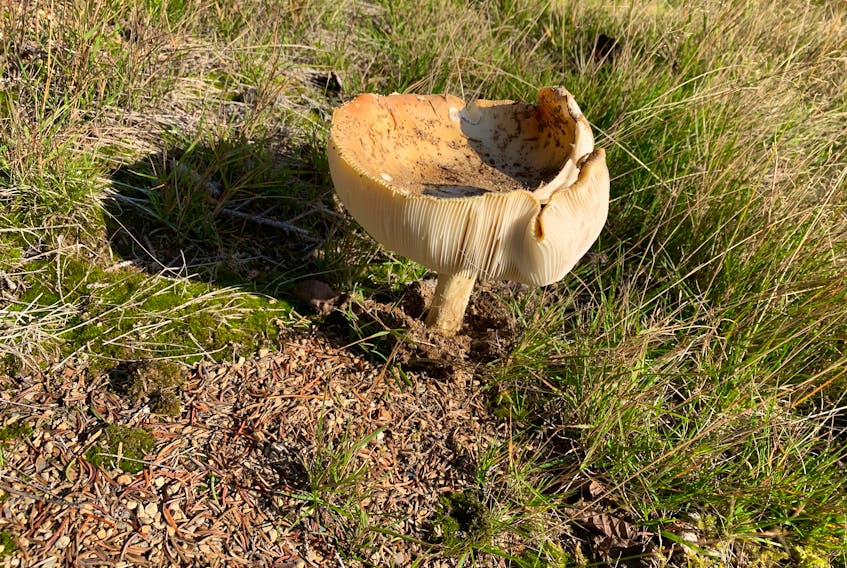It’s mushroom time. But, then again, outside of winter, when isn’t it mushroom time, and isn’t that wonderful?
Sure, there are plenty of times when you can find mushrooms, but right now, as the fall die-back reduces the available outdoor colours to part-faded-green and many red-brown-umbers, the stocky little funguses are making some of their most varied shows, capitalizing on the damp fall weather.
It’s part of the fall trifecta: mushrooms, the smell of damp leaf-rot, and the first hint of wood smoke on cold evenings.
But the mushrooms have the most magic.
Ever since I was little, I’ve loved coming upon a mature fall puffball, just starting to split open, so that I could nudge it with my toe and watch the dusty brown cloud of spores burst out and spread like milky smoke in the air. There’s a small, almost-god-like feeling to being the driving force behind such fecundity, launching a million or more spores into the world, and, eventually, into action.
Some are truly bizarre: I’ve never seen them in the wild, but in photographs, Xylaria polymorpha, dead man’s fingers, look every bit as horrible as their name suggests.
And then there’s the almost infinite variety that can be found in the smallest areas of wild ground.
Fairie ring mushrooms that rise up in their imperfect circles around the roots of tree stumps that may have vanished beneath the turf years ago,
Slimy jacks, the slick-topped, sponge-gilled bolete that comes up only under long-needle pines, the pine species and the particular mushroom tied into their own unique and symbiotic dance: fungal sleeves from the mushrooms’ underground network coat the pine trees’ roots and help them to absorb nutrients.
Some are truly bizarre: I’ve never seen them in the wild, but in photographs, Xylaria polymorpha, dead man’s fingers, look every bit as horrible as their name suggests.
I collect very few edible mushrooms, usually only the ones I know really well: chanterelles, mostly, with their orange battered boxer’s-ear edges and faint smell of apricots.
There are ones I know less well — like the black inky-caps that grow in their close candle-like collectives before collapsing in on themselves like a fainting choir — that I still don’t dare eat. (My mother used to fry those in butter into an inky mess my father loved.)
I even leave the boletes — so beloved by slugs that the mushrooms get eaten from cap to barrel-stem, sometimes right down into the ground leaving only a hole in the turf wreathed with slug-slime — though they were also a favourite of my foraging Mom. I used to collect both the boletes and inky-caps, but they’d always face a much more critical and experienced eye than my own before ending up on a dinner plate.
One of my greatest social media terrors is the regular photo-posting of a random mushroom accompanied by the hopeful message “Can I eat this?” The answer is, unless you’re certain, no. And should anyone really make serious, life-changing decisions based on a social media post? (That’s a rhetorical question that does not require a U.S. election-based answer.)
Everywhere, the mushrooms just go about their business, primarily working in the underappreciated world of decay, breaking down things like lignin (the sturdy material that creates the shape and strength of woody cells) and making nutrients available in the soil again.
We’re lucky that the mushrooms — the fruiting bodies of what are often far more extensive underground fungal networks — can show every one of us what natural diversity looks like.
And rest assured, they’ll continue to do so wonderfully, long after we’re all gone.
They’ll even help to break us down into helpful nutrients.
Russell Wangersky’s column appears in SaltWire newspapers and websites across Atlantic Canada. He can be reached at [email protected] — Twitter: @wangersky.









